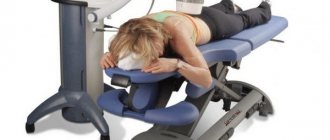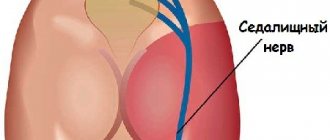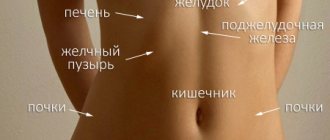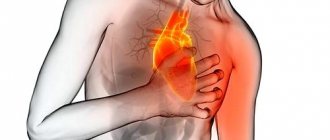Why does the shoulder joint hurt?
The shoulder joint accounts for a large amount of work that we perform every day. It is responsible for most movements of the upper limb. If it is overloaded with additional loads, it may not be able to withstand it and then pathological changes begin.
The causes of violations can be different: physical exercise, injury, disease. If you are worried about pain that does not go away for a long time, it is better to consult a doctor to find out the cause of this condition and begin treatment in a timely manner.
Common causes of pain in the shoulder joint include the following: incorrect position at a desk, slouching, a sedentary lifestyle, heavy physical activity or professional sports.
Depending on the nature of the pain, we can draw a conclusion about the reasons that provoked it.
Acute pain has a sudden onset and high intensity. It is observed in osteochondrosis, when nerve endings are pinched. The pain often bothers you at night, interferes with sleep, and limits arm movements and head turns. With arthritis, acute symptoms are also observed - the joint becomes inflamed and cannot normally perform its usual work. In more severe cases, arthrosis is observed, which occurs against the background of injuries or age-related changes. The patient cannot perform normal movements and feels severe pain.
There is a condition called neuritis of the brachial nerve, which is observed against the background of inflammation, tumors, and injuries. Among the inflammatory processes, tenobursitis should also be distinguished, which is an inflammation of the periarticular structures and ligamentous apparatus. The pain will be localized throughout the arm, including the shoulder.
After prolonged painting work or other non-standard hand movements, acute pain in the shoulder joint may occur. This condition is called rotator cuff disease. Injuries have the simplest and most understandable mechanism for the occurrence of acute pain - the integrity of the joint structures is affected, swelling quickly increases and the neurovascular bundles are compressed.
The chronic nature of pain is observed during a long course of inflammatory and other processes. The sensations are observed over a long period of time, are less pronounced, but at the same time complicate the patient’s daily activities. Such symptoms are observed with tendonitis - inflammation of tendons and ligaments.
This condition can occur during and after prolonged exercise. Constant work causes movement of the joint, which is accompanied by friction of the tendons and their subsequent inflammation. Bursitis may also occur - damage to the joint capsule. Pain in the shoulder joint is observed constantly, does not allow a person to sleep and is accompanied by swelling.
In addition to acute and chronic pain, there is a type that occurs when moving. Most often, this is due to the deposition of calcium salts - calcifications. The symptom is observed when performing movements, raising the arm. The sensation of pain in the shoulder joint occurs suddenly, persists for a long time, and is of high intensity. When moving or touching the arm, pain from overextension may occur. It occurs after playing sports, exercises that involve the hands.
Aching pain in the shoulder is a separate symptom that is observed in a number of conditions. This pain is not constant, has no clear localization, and is accompanied by other manifestations. Aching sensations are observed with herniated intervertebral discs and chronic periarthritis. The pain may be accompanied by aches, numbness, headache and weakness. Aching symptoms occur during physical overload, hypothermia, and during infectious pathologies. Often, in addition to the shoulder, the hand and forearm are affected, and surrounding tissues are involved.
There is another type of pain in the shoulder joint - referred. It occurs with pathology of internal organs and radiates to the shoulder. Often this symptom occurs in cases of liver or heart dysfunction, and may indicate a heart attack, angina pectoris, or pneumonia.
Pathologies of internal organs
Pain in the shoulder joint of the left arm is usually mistaken for a manifestation of osteochondrosis. However, such discomfort often signals serious pathologies of internal organs. These include angina pectoris and myocardial infarction.
In the first case, the pain radiates to the shoulder and arm. With angina pectoris, patients complain of shortness of breath after exercise and constant pressure in the chest. Sometimes pain in the shoulder joint of the left arm is the only symptom indicating a disease.
With myocardial infarction, the classic clinical picture usually looks like this: difficulty breathing, burning in the chest. In some cases, pathology is indicated only by discomfort in the shoulder girdle and neck. As a rule, it is the left shoulder joint that worries.
Symptoms
Pain in the shoulder joint may be accompanied by other symptoms - general and in the arm. Let's start with the fact that the pain can be one-sided, or it can be observed symmetrically, on both arms. Sometimes only one shoulder joint is affected, isolated, and in some cases a group of joints is affected, and the lower limb or spine is included in the process. This is an important point in diagnosis, which allows you to determine the nature and type of pathology.
The following symptoms may be observed from the limb:
- numbness of the hands, which is caused by disruption of the nerve endings and vascular bundles. This occurs during inflammation, swelling, during rehabilitation after injuries and surgical treatment.
- coldness of the limbs, fingers. This symptom is closely related to the previous one and often occurs in combination with it. It is also observed in cases of microcirculation disorders, damage to the lining of blood vessels, and insufficient function of nerve structures.
- limited movement in the joint. Occurs due to disruption of articular structures, inflammation of surrounding tissues, and violations of the integrity of articular surfaces.
- change in the condition of soft tissues. Soreness is often accompanied by swelling, a local increase in temperature, redness of the skin and its smoothing, swelling.
- joint deformation is observed in the later stages of the pathology, with improper treatment of traumatic injuries, or long-term arthritis. The joint may take on an unnatural shape or increased size.
- trembling in the fingers, which is observed when innervation is disturbed.
- back pain is observed if the symptoms are provoked by a disease of the spine.
- pain in other joints occurs with systemic diseases.
Common symptoms include weakness, headache and dizziness. There may be an increase in temperature, disturbances in sleep and physical activity. With a long course of the disease, the patient experiences emotional changes, which affects his mental health.
There is no such disease that acts in isolation. So in the case of damage to the shoulder, the whole body suffers. Therefore, pain requires a full diagnosis and thorough examination of the patient. Only then can effective treatment of the condition begin.
Prevention measures
It is easier to prevent any disease than to treat it later. This rule applies to all pathologies affecting the shoulder joint. Pain when raising your arm, which often accompanies arthritis and capsulitis, can be prevented if you follow simple rules.
First of all, doctors advise to exercise regularly. It is not at all necessary to engage in sports professionally; morning exercises are enough. Yoga and swimming are great for strengthening your joints.
In addition, you need to monitor your diet. It should be balanced, rich in vitamins and microelements. Timely treatment of infectious diseases is the key to good health. If you wear warm clothes in bad weather, you can avoid hypothermia.
If you have aching pain in the shoulder joint of your left or right arm, you need to find out the cause of the pathology. To solve this problem, you cannot do without the help of a qualified specialist. Only after a comprehensive examination will the doctor be able to make a final diagnosis and guarantee adequate therapy. It is not recommended to self-medicate, as this will only aggravate the pathological process. Be healthy!
Diagnostics
Any diagnosis begins with collecting an anamnesis. It is necessary to detail the complaints, to understand when the pathology began, with what manifestations and after what. If any attempts have been made to eliminate the pain, it is necessary to understand which of them were successful and which did not work.
A detailed examination of the local area in the shoulder joint is also carried out to determine whether there are soft tissue changes, swelling, deformation, redness or swelling. To clarify the characteristics of the pain, a number of tests are carried out: you need to try to make movements of the joint and understand whether they are possible or limited. Attention should also be paid to associated symptoms, which will enhance the understanding of overall health.
Next, a higher-quality diagnosis is carried out, during which instrumental and laboratory methods are used. From laboratory tests, a general blood test is used, the results of which can show data on inflammation, blood loss, and the infectious process. If the cause is gout, elevated uric acid levels may be seen.
Rheumatoid processes give rise to changes in biochemical blood tests. Detailed bacteriological and serological studies are used to confirm the infectious process.
Instrumental diagnostics can be carried out using different methods, depending on the subject of the diagnostic search. An x-ray can show violations of the integrity of bones and joint structures, dislocation, fracture, degenerative changes, and tissue destruction. Soft tissues are examined using ultrasound diagnostics.
This method allows you to assess the condition of ligaments, tendons, muscles, and the periarticular capsule. Ultrasound shows bruises, sprains, tears and inflammatory changes. More detailed data requires tomography. This can be computer or magnetic resonance diagnostics. Such methods provide information on levels, illuminating the state of tissues in different sections. On tomography, you can see joint changes or diseases that are localized beyond its boundaries.
Based on the data obtained, a diagnosis is made, depending on which treatment tactics are thought out.
Treatment
In order for severe pain in the shoulder joint to subside, the patient needs to undergo a comprehensive examination. After diagnosing the inflamed area and establishing the exact disease, the patient is prescribed therapy. To eliminate all factors in the development of the disease, the patient is prescribed treatment consisting of 4 components:
- Etiotropic – treatment of the cause of inflammation;
- Pathogenetic – to stop the development of the disease;
- Symptomatic – to reduce the manifestation of symptoms;
- Restorative – to quickly restore the functionality of the joint and improve the general condition of the patient.
When eliminating pain in the shoulder joints, the causes and treatment are interrelated. Therefore, to reduce the chances of developing complications and a quick recovery, the patient is prescribed full-fledged therapy from the four components listed above.
If the pain was caused by a hand injury, then the patient urgently needs to apply a cold compress to the inflamed area. Then the hemorrhage will stop a little, the swelling will decrease, and the discomfort will subside. Doctors eliminate pain in the joint of the right or left hand with traditional treatment:
- Applying a cold compress;
- Hand fixation;
- Elimination of pain syndrome with drugs;
- External means - ointments.
If the right or left shoulder joint begins to hurt from overexertion, then the patient will only need external influence using special means. Ointments and gels have an analgesic and anti-inflammatory effect. Ointments consist of quickly absorbed components that do not leave a greasy film, do not close pores and act on deep tissues.
When using external agents when a joint hurts, it is worth remembering that it is not advisable to apply them to damaged areas of the skin and mucous membranes. Also, doctors do not advise applying the cream under tight bandages or combining it with various warming objects. If itching, burning or any other allergic reaction occurs, the ointment should be washed off immediately.
To take medications orally, doctors prescribe tablets to patients. They must be taken according to a strict prescription. The doctor prescribes medications to the patient, taking into account the condition at the time of damage to the joint, the presence of other pathologies and possible allergies. The following drugs have an anti-inflammatory effect:
- Diclofenac;
- Ibuprofen;
- Indomethacin;
- Meloxicam;
- Xefocam;
- Nimesulide.
For arthritis, arthrosis or bursitis, pain in the shoulder joint when you raise your arm can be eliminated with non-steroidal anti-inflammatory drugs and chondroprotectors.
If the disease has developed to a complicated stage and the drugs used do not give the desired effect, then the doctor prescribes the patient a minimal use of hormones and drugs with narcotic analgesics. These drugs are taken to reduce the risk of developing malignant tumors.
Security mode
During this period of treatment, the shoulder is fixed with an elastic bandage to prevent further damage to the joint. The patient should then be placed on strict bed rest, and in case of injury or after surgery, a temporary plaster cast may be applied.
Physiotherapeutic methods
Such procedures are prescribed when it is possible to cope with acute pain syndrome. The type of physiotherapy depends on the disease:
- Magnetotherapy. Impact on the shoulder using various magnetic fields;
- Hirudotherapy. This is a treatment using medicinal leeches;
- Phonophoresis. Exposure of the joint to an ultrasonic wave, which helps the drug (Hydrocortisone) penetrate deeper into the tissue;
- Electrophoresis. This is the administration of medicine using a direct electric current;
- Shock wave therapy. Impact on the bone and connective tissue of the shoulder with sound waves of different amplitudes;
- UHF therapy. Influence on the body using a high-frequency electromagnetic field;
- Acupuncture (acupuncture). Impact with needles on biologically active points in the shoulder area. The method is aimed at relieving pain, improving mobility and reducing swelling;
- Acupressure of the collar area;
- Moxibustion therapy. The impact of a smoldering cigar on active points, while the functioning of internal organs is normalized;
- Stone therapy. Treatment with stones that absorb a lot of heat and release it slowly;
- Vacuum therapy. This is a cupping massage that significantly improves the condition of the tissues and muscles in the shoulder, relieving even severe pain. You can purchase inexpensive and high-quality massage cups in this certified and reliable store.
It is very important to complete the full course of treatment even if the pain has completely gone.
Source: https://we treat-joints.rf/bolit-plechevoy-sustav-chto-delat-kak-lechit/
Treatment of pain in the shoulder joints with traditional medicine
For bruises, injuries, sprains and sprains, the best initial treatment is the application of cold compresses or ice. Provide the affected joint with immobility for a certain time, apply any product from the freezer to your shoulder, even if it is frozen vegetables or a pack of dumplings.
Very often, this is the only way a person can relieve pain and avoid the appearance of a massive hematoma. You can also use ointments that contain indomethacin, diclofenac or ibuprofen. These drugs locally relieve inflammation and tension, soothe pain.
At home, massage with essential oils is quite useful. Preparing a solution for massage is quite simple: you need to add a couple of drops of essential compositions to 150 ml of base oil. For example, they relieve pain in the shoulder joint, and also have antispasmodic and anti-inflammatory effects of the oil:
- Geraniums;
- Rosemary;
- Eucalyptus;
- Fennel;
- Frankincense;
- Juniper;
- Lavender;
- Ginger.
Compresses with horseradish, cabbage leaves, honey, as well as decoctions of horsetail, burdock or nettle will also help cure a sore shoulder joint. By the way, decoctions of medicinal herbs can not only be used as part of treatment for external use, but also consumed internally.
You can try to remove the pain symptom using baths with sea salt, mustard powder or the same decoctions of medicinal herbs.
Source: https://artrit.guru/metody-lecheniya/prichiny-boli-v-plechevom-sustave-simptomy-i-lechenie.html
Shoulder joint treatment
The goal of treatment for pain in the shoulder joint is to reduce discomfort, restore range of motion, improve overall well-being and increase performance.
Conservative therapy and physiotherapeutic techniques are used, and in some cases surgical intervention is required. Therapeutic gymnastics is highly effective.
Among the methods of physiotherapy, electrophoresis, magnetic therapy, therapeutic baths and showers, mud therapy, and massage are highly effective. It is worth paying attention to the state of the body and concomitant pathology when choosing a specific method. Many of the physiotherapeutic procedures have a number of contraindications that should be excluded. In case of injury, immobilization and creation of conditions for faster tissue fusion are required. If the fragments have been displaced and there are multiple fractures, surgical treatment is performed.
Medication methods depend on the reasons why the shoulder joint hurts. For gout, metabolic therapy is required, and for an infectious process, antibacterial agents are required; only the attending physician can prescribe drugs. Anti-inflammatory substances are used as symptomatic drugs. These include indomethacin, celecoxib, diclofenac, paracetamol, ibuprofen, nimesulide. If there is destruction of bone tissue, chondroprotectors are used - glucosamine, hyaluronic acid. chondroitin and their derivatives. In acute cases, glucocorticoids, dexamethasone, and hydrocortisone are used.
Injuries and damage
Since the shoulder joint is the most complex and at the same time fragile joint in the human body, this means that it is more susceptible to injury than others. Injuries can be of a domestic nature (falling on your hand), professional (sudden movements, heavy lifting) or sports.
The left hand is injured several times less often, because most people on our planet are right-handed. The most common type of mechanical injury is bruise. Patients usually do not pay much attention to this pathology, hoping that it will go away on its own. However, this is a serious mistake; bruises are not always harmless. Patients develop a tissue hematoma, which resolves on its own after a few weeks, and along with it the pain in the shoulder joint of the right arm disappears. Sometimes, when a bruise occurs, damage to the joint capsule can occur. In this case, you cannot count on a quick recovery. In order to avoid complications, it is necessary to promptly consult a doctor and undergo appropriate treatment.
Another fairly common type of injury is dislocations and subluxations. In the latter case, the head of the humerus literally slips out of the glenoid cavity, after which it snaps into place on its own. When a dislocation occurs, the bone comes completely out of the joint cavity. Often this pathology is accompanied by ruptures of the capsule and ligaments. The patient experiences pain in the shoulder joint of his right arm, and he cannot move the limb forward or backward. It is strictly forbidden to adjust dislocations yourself. Before this, it is necessary to check the joint for fractures, and this can only be done through x-rays or MRI.
Nature of shoulder pain
There are several types of sensations, differing in their intensity:
- Strong pain. Occurs with injuries to the shoulder and pinching of its nerve endings, including intervertebral hernia, as well as in cases of acute inflammation of the tendons.
- It's a dull pain. May indicate serious disorders in the body. Continuous aching pain can indicate heart disease, the presence of angina pectoris and other ailments.
- Acute pain. Typically indicates joint damage and often occurs when lifting heavy objects.
- Sharp pain. It can be caused by infectious processes that occur in the nervous tissue, or due to excessive stress.
- Constant pain. This indicates severe inflammation of the joint, dislocation or damage to the humerus, which requires immediate and specialized treatment.
- Throbbing pain. Usually appears due to overstrain of the muscles of the shoulder girdle.
- Blunt pain. It may indicate the presence of tendinitis, bursitis and other diseases of the shoulder joint.
- Burning pain. Occurs in the presence of an inflammatory disease, for example, osteochondrosis.
Diagnostic methods
If you experience shoulder pain of any nature that does not go away for several hours in a row, you must definitely visit a traumatologist. A specialist can conduct one or more special types of diagnostics, including:
- X-ray diagnostics is the use of X-rays to identify the condition of the cartilage tissue in the joints and the presence of any damage to the humerus.
- MRI (magnetic resonance imaging) is a thorough and fairly informative examination of the shoulder that allows you to identify the presence of various diseases, including osteoarthritis, arthritis and others.
- CT (computed tomography) is a scan of the shoulder joint using special sensors to identify the cause of pain in the shoulder area and its nature (inflammatory, degenerative or dystrophic). It is worth noting that this and other diagnostic methods are painless and completely safe for the body.











